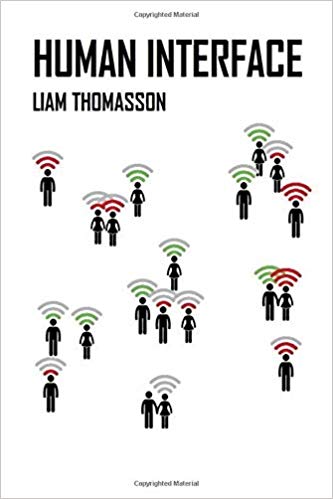
to implement the concepts of his original Macintosh concept. Raskin left Apple in 1982 and formed Information Appliance, Inc. Jef Raskin holding a model of the Canon Cat. It has the three described buttons (two invisible), but they are assigned to different functions than Raskin specified for his own interface and can be customized.

This description nearly fits the Apple Mighty Mouse, which is available now. Raskin later stated that were he to redesign the mouse it would have three clearly labeled buttons-two buttons on top marked "Select" and "Activate", and a "Grab" button on the side that could be used by squeezing the mouse. Others, including Larry Tesler, acknowledge his advocacy for a one-button mouse but say that it was a decision reached simultaneously by others at Apple who had a stronger say on the issue.
#JEF RASKIN CONCEPT OF HUMANE INTERFACE MAC#
Raskin also claims to have had continued direct input into the eventual Mac design, including the decision to use a one-button mouse as part of the Apple interface, a departure from the Xerox PARC's 3-button mouse. Raskin takes credit for introducing Jobs and other Apple employees to the PARC concepts. In 1981 Steve Jobs directed his attention to Raskin's Macintosh project, intending to marry the Xerox PARC-inspired GUI-based Lisa design to Raskin's appliance-computing, "computers-by-the-millions" concept. In many cases these switches would be largely invisible to the user. For instance, if the user simply started typing text it would switch into editor mode, and if they typed numbers it would switch to calculator mode. The machine also included logic that would understand user intentions and switch programs on the fly. A number of basic applications were built into the machine, selectable by pressing function keys.

The machine was similar in power to the Apple II and included a small 9-inch black-and-white character display built into a small case with a floppy disk. He later hired his former student Bill Atkinson from UCSD to work at Apple, along with Andy Hertzfeld and Burrell Smith from the Apple Service Department, which was located in the same building as the Publications Department. Raskin started the Macintosh project in 1979 to implement some of these ideas. The machine he envisioned was very different from the Macintosh that was eventually released and had much more in common with PDAs than modern desktop-based machines.

In Computers by the Millions, he stated that expandable computers like the Apple II were too complex, and development was difficult due to the unknown nature of the machine the program ran on. While the Apple III was under development in 1978 and 79, Raskin was lobbying for Apple to create a radically different kind of computer that was designed from the start to be easy to use. Through this time Raskin continually wrote memos about how the personal computer could become a true consumer appliance. When Steve Wozniak developed the first disk drives for the Apple II, Raskin went back to his contacts at UCSD and encouraged them to port the UCSD P-System operating system (incorporating a version of the Pascal programming language) to it, which Apple later licensed and shipped as Apple Pascal. His experiences testing Applesoft BASIC inspired him to design a competing product, called Notzo BASIC, which was never implemented. Because the Apple II only displayed uppercase characters on a 40-column screen, his department used the Polymorphic Systems 8813 (an Intel-8080-based machine running CP/M), to write documentation this spurred the development of an 80-column display card and a suitable text editor for the Apple II. For some time he continued as Director of Publications and New Product Review, and also worked on packaging and other issues.įrom his responsibility for documentation and testing, Raskin had great influence on early engineering projects. In January 1978 Raskin joined Apple as Manager of Publications, the company's 31st employee. Steve Jobs hired his firm, Bannister and Crun, which was named for two characters in the BBC radio comedy The Goon Show, to write the Apple II BASIC Programming Manual. Raskin first met Apple Computer's Steve Jobs and Steve Wozniak following the debut of their Apple II personal computer at the first West Coast Computer Faire. He occasionally wrote for computer publications, such as Dr.

Raskin later enrolled in a graduate music program at the University of California, San Diego (UCSD), but stopped to teach art, photography and computer science there, working as an assistant professor from 1970 until 1974. His first computer program, a music program, was part of his master's thesis. In 1967 he earned a master's degree in computer science at Pennsylvania State University. 1965) at the State University of New York at Stony Brook.


 0 kommentar(er)
0 kommentar(er)
